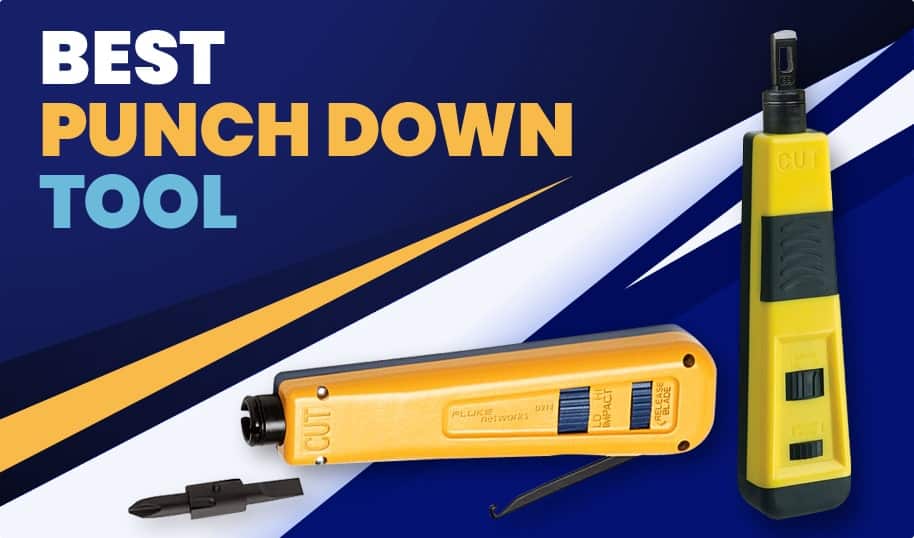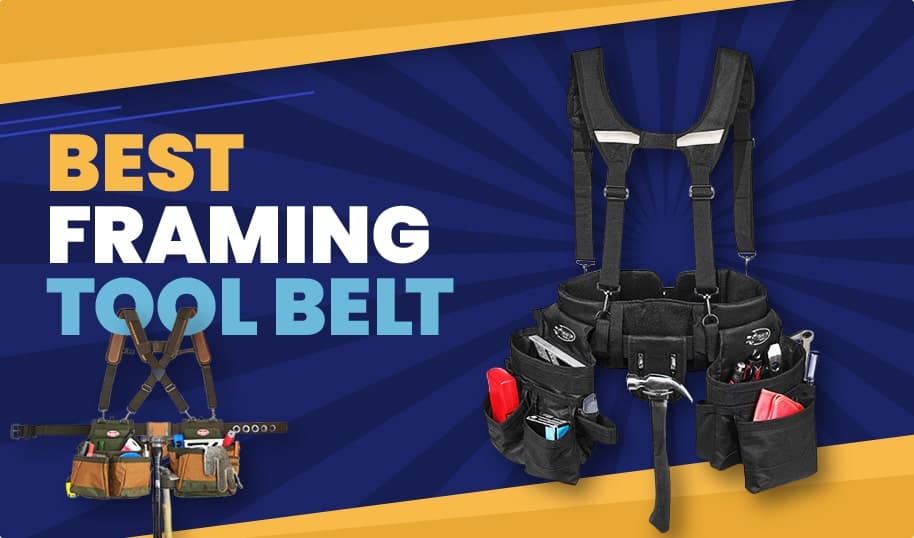
I would not be the first one to tell you that you should only use insulated tools while working with electricity.
if you a DIYer, a novice electrician, or an expert in this domain should all know how to tell if a tool is insulated.
I did a lot of internet research and did not find clear information in any of the links and therefore, I decided to write this blog to give our clear information on this topic.
When you are not sure if your tools are insulated or not, then always presume that they are not.
The very first thing you should look for is the international 1000 Volt Symbol.
If you want to know how to tell if a tool is insulted, then this is one of the best methods since all approved insulated tools have this symbol.
But, hold on! There are many misconceptions about this topic – how to tell if a tool is insulated and I have included all about it in the subsequent sections.
Moreover, I have included a safety checklist in this write-up that you can keep handy to keep yourself safe at all times.
You will also find interesting details on the other important aspects of insulated tools like how they are made, various certifications and their meaning, etc.
What is an Insulated Tool and How to Tell if a Tool is Insulated?

Defining Insulated Tools: Insulated tool are those tools which are used by electricians to keep them protected from accidents like electrocution, arc flash, or blasts.
An insulated tool contains properties that make it a non-conductor of electricity which does not allow any voltage to flow through it and thereby keeping you protected.
Everyone who works with electricity must know how to tell if a tool is insulated or not.
How to Tell If a Tool Is Insulated – The Sure-Shot Way
The best way or the sure-shot way, how to tell if a tool is insulated, is by checking for the 1000 Volt Symbol.
This is a simple step to ensure your safety. Every insulated tool is supposed to be marked with this symbol that represents its protection level up to 1000 V of electric current.
Even-though these insulated tools are marked with 1000-volts, they are subjected to 10,000-volts before they are distributed. This is mandated by the ASTM F1505 standard.
Every manufacturer involved with the production of insulated tools has to adhere to IEC or International Electrotechnical Commission 60900 standard and also the NFPA or National Fire Protection Association 70E standard.
Therefore, the sure-shot answer to how to tell if a tool is insulated is by checking for the 1000 V symbol on your tool. Once you discover this, you can be assured that your tools are insulated.
If you are looking for an insulated screwdriver, then can check out Klein Tools 32288 (8-in-1 screwdriver set). It is made from an insulating material and with complete safety standards.
We earn a commission if you click this link and make a purchase at no additional cost to you.
How to Tell if a Tool is Insulated – The Rubber Misconception!
One thing that you will commonly find while purchasing or using an electrical tool is that it is equipped with a rubber coating.
This may be on the handles of the tool. But I must caution you!
Having a rubber coating doesn’t necessarily mean that they are insulated.
The use of rubber on electric tools serves multiple purposes but relying on them for insulation would be a big mistake.
Detailed Explanation
Let me explain. There is a common misconception that rubber is a non-conductor and hence suitable for electrical works.
This information can be misleading to a DIYer or a novice electrician. Rubber alone cannot provide complete protection while you work with electrical circuits or equipment.
The rubber coating on the electrical tools is very thin and hence does not offer good protection against electrical hazards.
Moreover, it does not have enough dielectric properties to keep you safe from electrical shocks.
The Perfect Answer – Combined Use of Rubber, and Plastic
The combined use of plastic material and rubber is suitable to offer great protection.
The hand tool handles have layers of plastic and rubber in which the plastic has a brighter color compared to the rubber.
We earn a commission if you click this link and make a purchase at no additional cost to you.
Now try to understand this – the rubber is elastic material and is prone to regular wear and tear.
This means it can expose you to the conducting metal inside and can be very dangerous.
The presence of the layer of plastic inside this rubber helps to keep away from any direct contact with the metal. This does not mean that the rubber has no purpose.
If you are looking for an insulated knife, then check out KNIPEX Tools 9855SB.
We earn a commission if you click this link and make a purchase at no additional cost to you.
It gives out a precision performance and is built as per industrial standards that make it very safe to use for electrical work.
The Real Purpose of Rubber in Electrical Tools
A dielectric rubber coating provides initial insulation, great grip, and comfort to let your work conveniently.
Moreover, rubber is oil and chemical resistant and hence gives you protection from any chance of shock from electricity (which can use moisture as a conductor).
Another great advantage of the rubber handles is that they come with enlarged finger guards that will protect your fingers from slipping when you work.
Accidentally, touch to the electrical circuit can be dangerous.
How Insulated Tools are Made
You would observe that the insulated tools are comparatively expensive than the regular ones.
The basic reason behind this is the effort, time, and process of construction they go through.
Insulated tools have to go through an immense process to provide full protection to the users and the time and effort in making these are more complex.
One of the most popular methods to make these insulated tools is by dipping and injection molding.
However, both these methods give out the same results so the technique of manufacturing is a matter of personal choice.
Sure, you just wanted to know how to tell if a tool is insulated, but it has a lot to do with how it is made.
I shall explain each method of making insulated tools shortly.
Dipping Process
Some companies in North America prefer using this method to make insulated electric tools.
It is a multi-step process that ensures each tool manufactured meets the ASTM F1505 standards.
These standards define the important aspects of insulation like adhesion, dielectric properties, flammability, and its durability.
Those tools that are manufactured using this process have 2-layers of insulation which are made in contrast colors like red and yellow or yellow and orange.
This process is pretty lengthy and requires extreme precision for the perfect results.
As explained before, when one layer starts getting tore or gets damaged, you must replace the tool.
Once the inner layer is visible it is no longer safe to use.
Once the initial process is done each tool is trimmed, cleaned, polished and then laser engraved. This is one of the most important stages of the manufacturing process for insulated electric tools.
Check out Fluke IKST7 insulated screwdriver set that is made from German CMV steel for durability.
It is built as per industry standards and is safe to use up to 1000V.
We earn a commission if you click this link and make a purchase at no additional cost to you.
Injection Molding Process
This process is more common in Asian and European countries. Injection molding requires actual molding of the handles from an insulating material. These manufacturers do not use the tools and dip in the insulating material in the process of construction.
To Conduce
I cannot clearly say which method is better to make insulated tools. Both methods result in a product that offers protection up to 1000 V and has a lifetime warranty.
Again, the method of production is at the discretion of the manufacturer.
If you are contemplating buying an insulated ratchet, then I suggest you check out WERA 05004966001. It is an insulated ratchet with a hex style head and is built as per industry standards. This ratchet is safe for electrical use.
We earn a commission if you click this link and make a purchase at no additional cost to you.
The Checklist
I would like to repeat my words that insulated tools do not eliminate the danger. They are merely designed in such a way that it reduces the chance of any injury due to sudden accidents while you work with live electrical circuits.
You need to practice extreme caution and take proper safety measures like using proper PPE or de-energizing the lines or objects before you start working over it.
Only skilled and qualified electricians should work on live installation but they still need to practice safety while doing so.
Please remember that failure or lethargy in following the safety rules or guidelines can prove to be fatal. I have drafted a checklist that will help you stay safe while you work with electrical circuits.
- I insist that you only use insulated tools that come with the official international 1000 volt symbol.
- Always perform an inspection on your tools for any signs of wear and tear before using them at each job site.
- As an electrician, you should know that keeping your tools dry and clean is of utmost importance. A slight carelessness might be fatal.
- Not all the tools you carry around would be insulated. Therefore, it would be a good practice to keep them in separate pouches so that you do not get confused while making use of each type.
- Immediately stop using the insulated tool if the outer layer appears damaged. Also, make sure that you replace the tool since it will no longer provide effective protection against live voltage.
- When you are working on the energized circuits, never touch the non-insulated part of the tool with bare hands. You might end up having an electric shock.
- It will be a good idea if you let an experienced and qualified person check and inspect your tools regularly.
- Each tool has a specific purpose and while dealing with electrical equipment you should always remember that. Only use tools for their specific use.
- Follow the safety standards and guidelines of the industry like OSHA, NFPA, CSA, etc.
- You can also have an arc flash analysis performed on your premises. This would help you to determine the requirement of PPE along with your insulated tools.
How to Tell If A Tool Is Insulated – FAQ and Importance
When I first started explaining how to tell if a tool is insulated, probably a question popped into your mind – why exactly do I need to check?
There are multiple advantages to checking for insulation in your tool while you work around live electric parts. Insulated tools protect against any possible electric shock or arching.
When you work around the live wires or objects, there is always a possibility that you mistakenly get in direct contact with it. The use of insulated tools along with proper PPE helps to stay protected against such dangers.
Another advantage of these insulated tools is that they even protect the object or equipment that you inspect or repair. Even when the equipment or object appears de-energized, there is always a possibility of the presence of some voltage from other sources.
If you do not use an insulated tool then chances are that these live objects may pass the voltage through to the tool and you might end up getting an electric shock. Such instances even end up damaging the object you are repairing. Using an insulated tool for electrical purposes prevents that from happening.
If are looking for a professional insulated screwdriver set as per company standards, then I suggest you check out Wera Kraftform Plus. It is built with German technology and comes with a lifetime limited warranty.
We earn a commission if you click this link and make a purchase at no additional cost to you.
How to tell if a tool is insulated and how is it different from regular tools?
The insulated electric tools are very different from other regular tools. A regular tool is just good for fixes and repair but it offers no protection against electrical shocks.
The insulated tools are not just any regular tool with extra rubber and colorful handles. They are specialized tools that are designed to offer great protection and can withstand about 1000 to 1500 Volts.
Moreover, as per the regulations by ASTM F1505, the design of the insulated tools should be such that they offer complete protection up to 1000 V AC. This means that even if the tool comes in contact with an object radiating electricity, it can withstand up to 1000 V and offer you complete protection.
Additionally, all the parts of the insulated tool are supposed to be flame resistant and they can function from -20 degrees Celsius to 70 degrees Celsius. Several tools like pliers or cutters come with a guard rail that can protect your hand from slipping down to any exposed live conducting part.
RDEER insulated screwdriver set is one such amazing product that is VDE and GS certified. This durable insulated toolset is made from chrome vanadium steel and is safe to work till 1000V.
We earn a commission if you click this link and make a purchase at no additional cost to you.
How to tell if a tool is insulated and who should use it?
Insulated tools are not just meant for electricians. Of course, electrical workers are more likely to use them more often. However, these tools should be used by anyone who works near-live objects conductive voltages.
Whether you need to open or close a panel or connect or disconnect the electrical contact, or maybe for troubleshooting and installing new circuits in a live panel, you must ensure to use them properly insulated tool.
How to Tell If a Tool is Insulated – Different Standards
The OSHA Standards
There are 2 OSHA standards, 1910.269, and 1926. These standards recommend the use of personal protective equipment or PPE, which includes insulated tools.
They mandate that the safety measures must be taken if the tasks at hand include electric shocks or other injuries from direct or indirect contact with electrical conductors that are energized.
The standard also states that any worker who is employed near a site exposed to energized conductors or circuit parts should make use of insulated tools.
As per the figures disclosed by OSHA standards, the details from electrical shocks are the fourth leading cause of details in the construction field.
A person can get into a painful shock by contact with a mere 1-3 milli-amperes and this can affect the perception of the victim.
Further statistics show that a 9 to 35 milli-ampere can cause muscular contraction, respiratory paralysis, and also the inability to let go.
Moreover, a 50 to 250 milli-ampere shock can lead to fatal heart failure and tissue burning.
ASTM Standards
ASTM F1505-94 is considered to be one of the most comprehensive standards (although it is similar to most other standards). Their standards instruct that all the insulated tools must be 100% dielectric. This means they should not be able to let the electricity pass through at least 1000 Volts.
It also states that the insulated tools should be made with flame-resistant materials and have slip-resistant handles. They should be able to retain insulation and should be able to function from temperatures ranging from -20 degrees C to +70 degrees C.
To get certified, these insulated tools go through strict testing by labs where they are checked thoroughly for their protection capabilities against electrical voltages, extreme temperature, pressure, and fire. As mentioned earlier they need to offer complete protection for 1000 V AC so that they can be used in live panels.
Conclusion
The basic purpose of this article to guide you on how to tell if a tool is insulated. After thorough research on this topic, I drafted this article to help you get comprehensive knowledge about it.
To sum up, if you want to understand how to tell if a tool is insulated, then simply check for the international 1000 volt symbol. This is the mark of assurance that would let you know if your tool is insulated or not. You can also look at the handle and make sure it is very thick and brightly colored.
I hope this article helped you gain valuable insight in knowing – how to tell if a tool is insulated.












